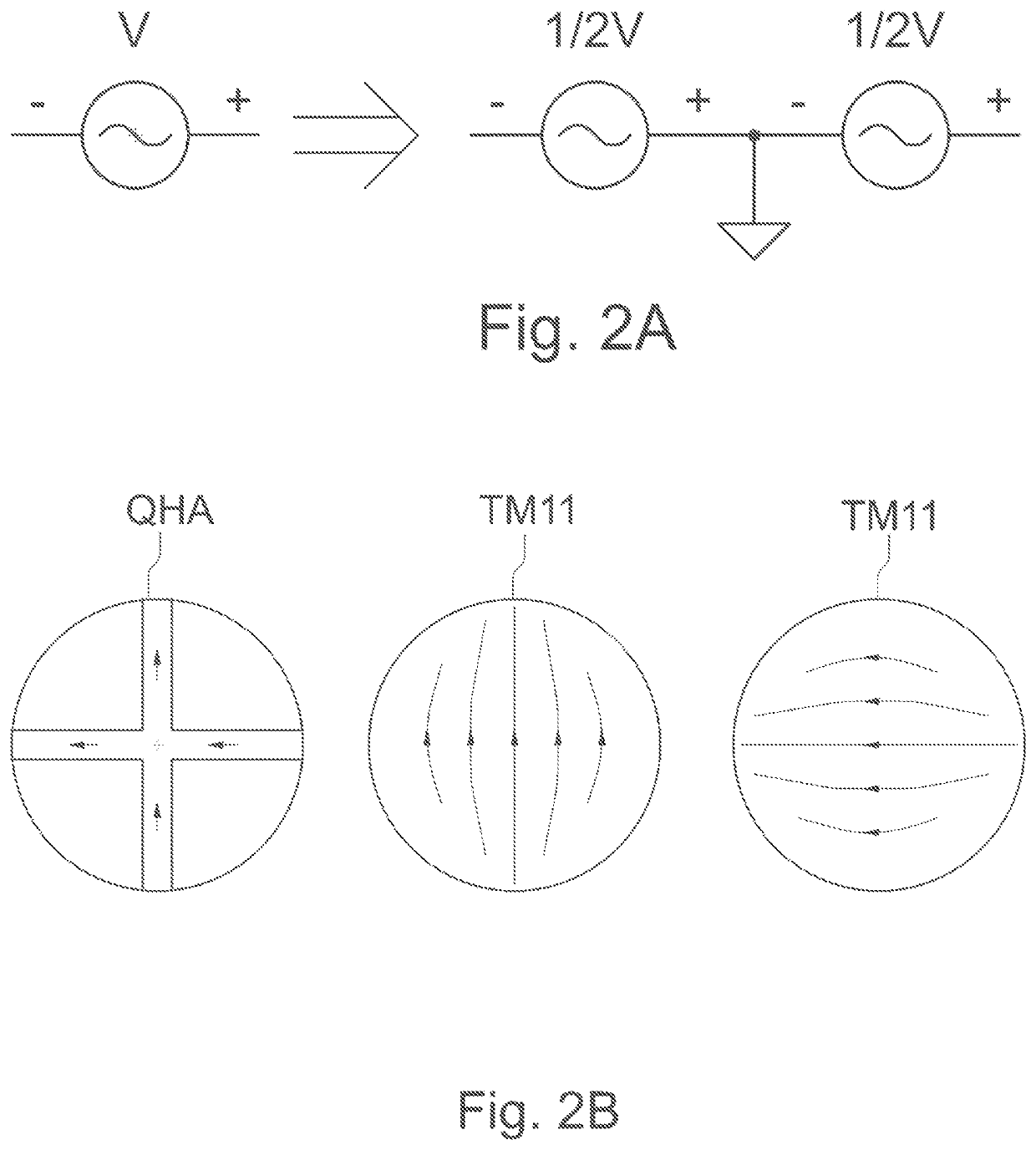Low Profile Dual-Band Quadrifilar Antenna
a quadrifilar antenna, low-profile technology, applied in the direction of resonant antennas, non-resonant long antennas, substantially flat resonant elements, etc., can solve the problems of poor gain-to-noise-temperature (g/t), position errors, and increased costs
- Summary
- Abstract
- Description
- Claims
- Application Information
AI Technical Summary
Benefits of technology
Problems solved by technology
Method used
Image
Examples
Embodiment Construction
[0042]Referring to FIG. 2A, the original ½ wavelength Kilgus QHA is fed by 2 balun perpendicularly. Once a ground is used, the source can be decomposed to an unbalanced source. FIG. 2B shows the RF current flow of the original ½ wavelength Kilgus QHA and the current of the orthogonal TM11 mode of a circular MSA.
[0043]The inventor has recognized that where a % wavelength Kilgus QHA configuration is applied, the RF current flow and voltage is null at the centers of the filar. Therefore, one can fill this area with conductor without changing the working principle. Further, the MSA TM11 mode equivalent circuit is parallel to that in the QHAs.
[0044]One skilled in the art appreciates that more current path will be excited when the patch size is resonant to a certain frequency. In this case, the lower band will have the half-wave shorted QHA. This is because the feeding impedance near edge reaches the highest point so MSA TM11 mode is mismatched. In other words, the lower band has minimal ...
PUM
 Login to View More
Login to View More Abstract
Description
Claims
Application Information
 Login to View More
Login to View More - R&D
- Intellectual Property
- Life Sciences
- Materials
- Tech Scout
- Unparalleled Data Quality
- Higher Quality Content
- 60% Fewer Hallucinations
Browse by: Latest US Patents, China's latest patents, Technical Efficacy Thesaurus, Application Domain, Technology Topic, Popular Technical Reports.
© 2025 PatSnap. All rights reserved.Legal|Privacy policy|Modern Slavery Act Transparency Statement|Sitemap|About US| Contact US: help@patsnap.com



